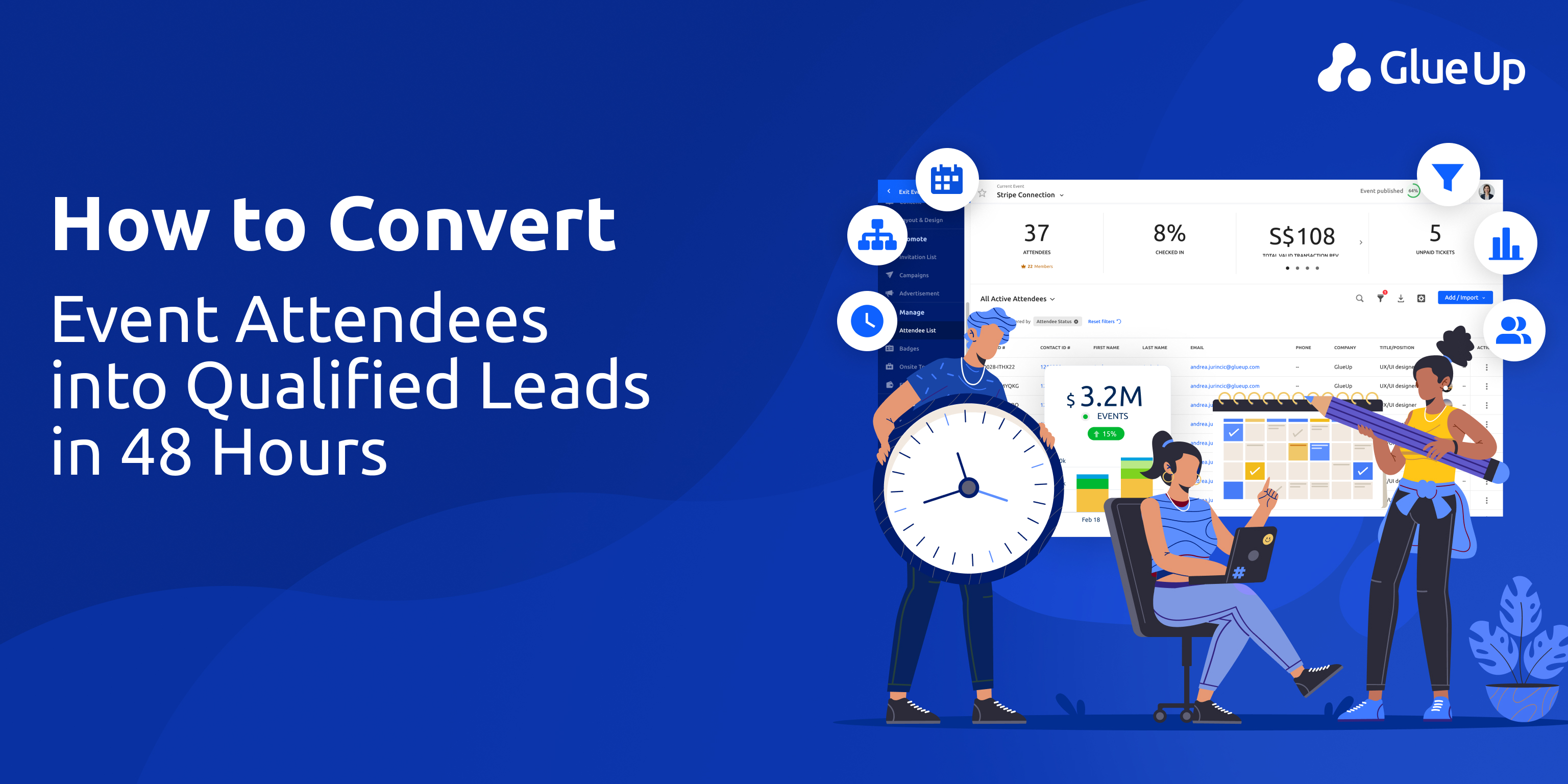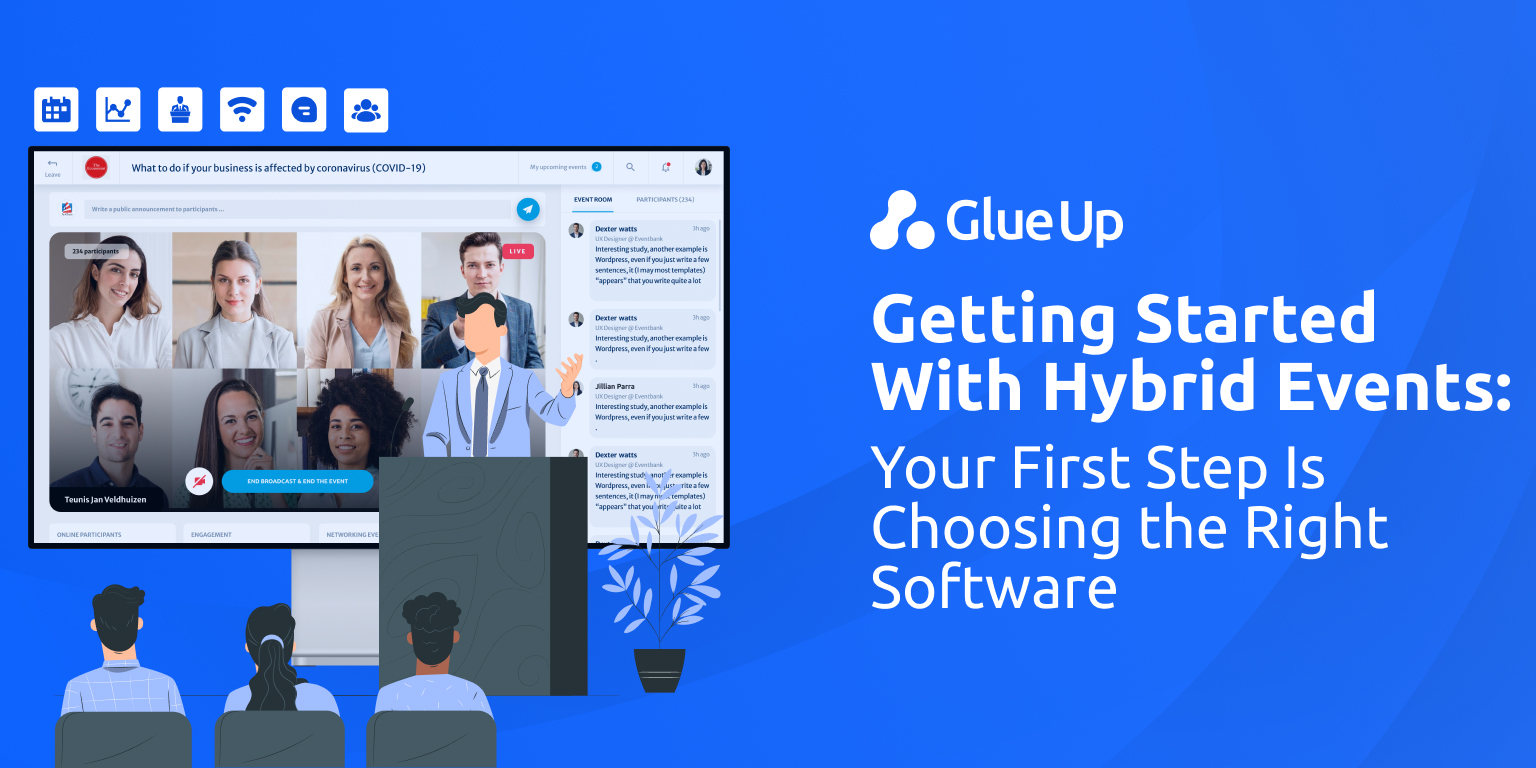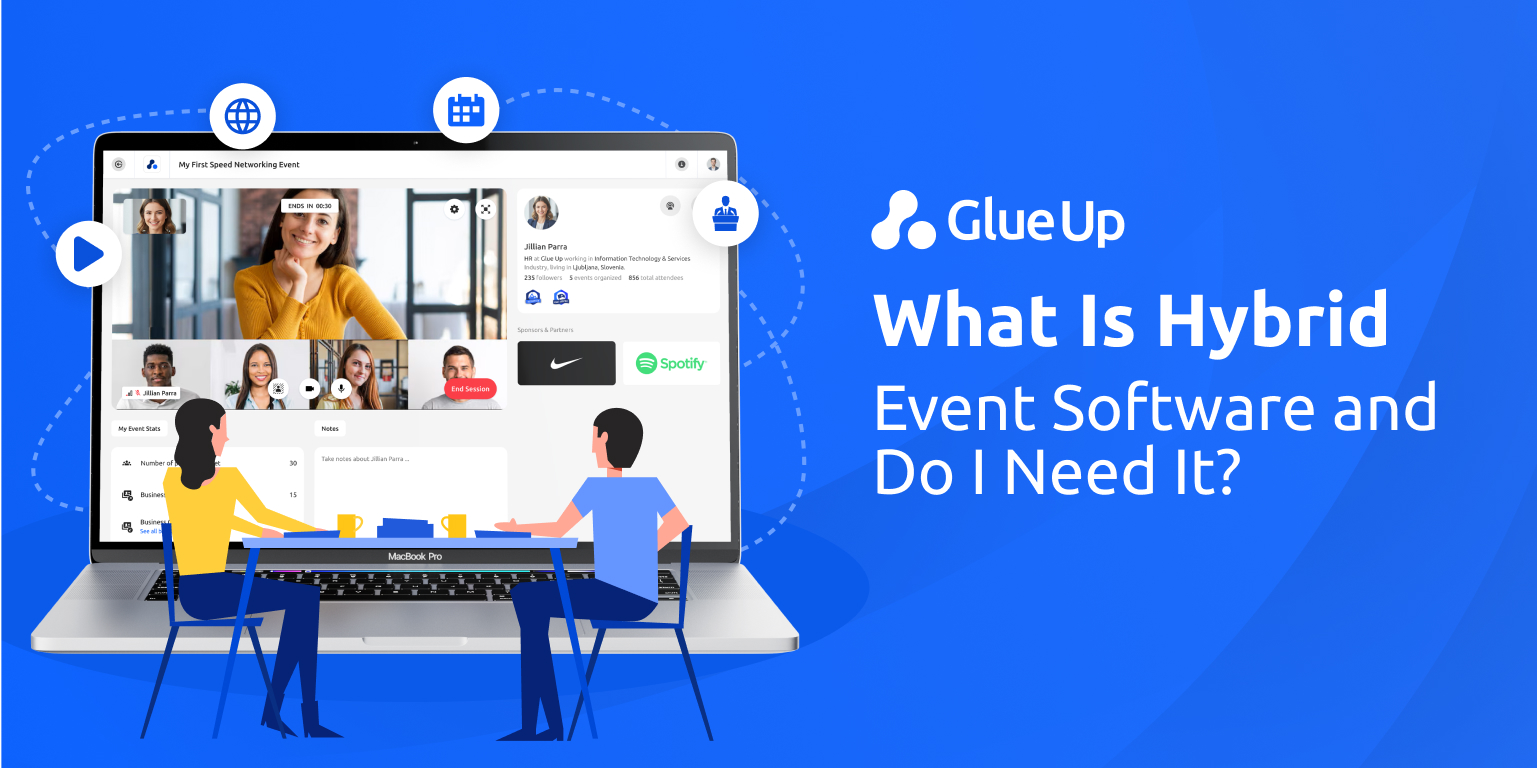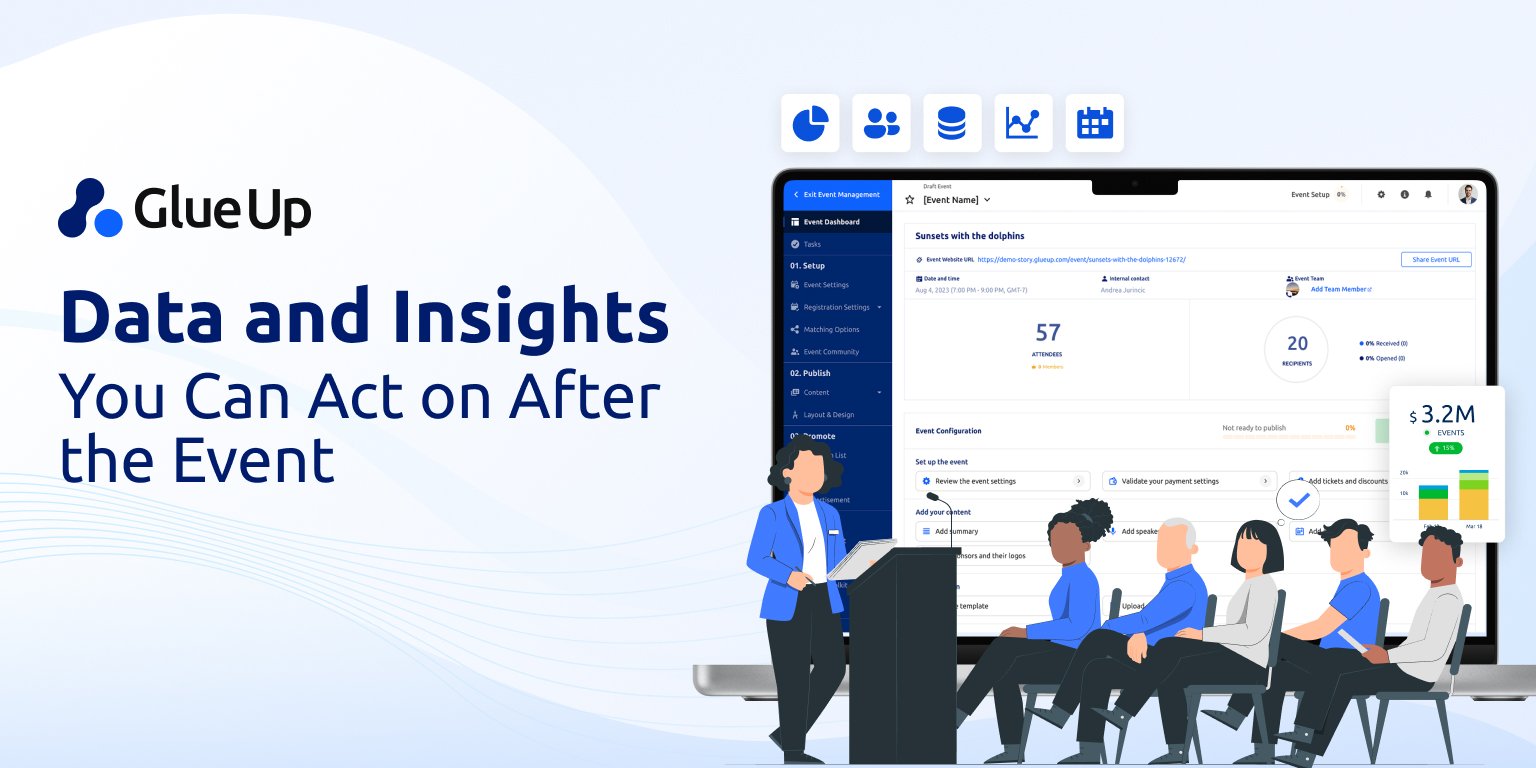
You’ve probably asked yourself this more than once: How do you convert leads into customers? If you’ve ever hosted an event, whether it’s a chamber networking mixer, an association’s annual conference, or a niche membership seminar, you know the energy is electric while people are in the room. But two days later? The magic fades, inboxes get flooded, and attention slips away.
That’s why the first 48 hours after an event are everything. This is where organizations either lock in qualified leads that become paying members, sponsors, or partners, or they let warm interest cool into silence. The clock starts ticking the moment someone leaves your booth or session, and what you do next determines whether they ever sign a contract with your organization.
This blog is your playbook for making those hours count. It’s detailed, evidence-backed, and built to be run inside Glue Up so your team isn’t just scrambling with spreadsheets and sticky notes. Instead, you’ll have a repeatable system that turns event buzz into booked meetings, new revenue, and stronger member relationships.
Key Takeaways
The first 48 hours after an event determine whether leads convert or fade. Responding within minutes, not days, drastically increases the chance of turning an attendee into a customer.
Capturing the right details: role, budget, priority, timeline, pain point; plus, explicit consent ensures your follow-up is targeted, compliant, and effective.
Embedding calendar links in thank-you pages and emails doubles the chances of securing meetings compared to generic “let’s connect” messages.
Using a time-based rhythm (T+0–2h, T+2–6h, T+6–24h, T+24–48h) across email, SMS, and LinkedIn creates consistent touchpoints that move leads forward without overwhelming them.
Tracking lead completeness, speed to first touch, booking rate, show rate, and pipeline created gives clear evidence of event ROI, making it easier to justify budgets to boards and sponsors.
Quick Reads
Why Minutes Matter More Than Days
Research has consistently shown what sales and membership professionals already feel in their gut: speed wins. Harvard Business Review has reported that responding to a new lead within five minutes makes you 100 times more likely to make meaningful contact compared to waiting just 30 minutes. Wait a day or two? Your odds collapse.
Events magnify this urgency. Attendees are engaged in the moment, thinking about solutions, budgets, and problems they want to fix. They’ve had a conversation with your team. They remember your name. But that memory competes with hundreds of other interactions, and the half-life of their attention is brutally short.
So when we ask again, How do you convert leads into customers? the answer starts with speed. If you can respond faster than their inbox fills up, you’ve already separated yourself from 90 percent of organizations that wait a week before sending their first follow-up.
Design Capture for Conversion at the Booth
The real conversion work begins before the attendee leaves your space. Every badge scan or sign-up form is an opportunity, but only if the information you capture is structured for qualification.
Here’s the formula:
Five non-negotiables to capture: role, budget band, priority, timeline, and the specific pain point they mentioned.
One free-text note: your team’s quick take, something personal like “asked about renewal struggles” or “interested in sponsorships for Q3.”
Consent: never skip this. Make sure you collect explicit permission to follow up, with a timestamp and record stored in your system.
Glue Up’s event tools make this ridiculously straightforward. Staff can scan badges or log details on mobile, add qualifiers instantly, and sync the data directly into the CRM. That means by the time the attendee walks away, their record already exists in your database, complete with compliance-safe consent and context-rich notes.
When the question comes up, How do you convert leads into customers without wasting time on bad data?, this is the answer. Start with quality input.
Make Booking the Default Next Step
Most organizations stop at the thank-you email. The smart ones make booking the default.
Here’s the difference:
Average approach: “Thanks for stopping by. Let us know if you’d like to talk more.”
Winning approach: “Thanks for stopping by. Grab 15 minutes on our calendar this week.”
That one sentence shift can double your meeting conversion rate. Tools like Calendly popularized the approach but inside Glue Up you can embed the same booking link directly into your follow-ups and landing pages. The moment someone says “yes,” they can choose a time, no back-and-forth emails required.
So, when you’re thinking, how do you convert leads into customers at scale? remember: don’t just ask for interest, offer the next step right there.
The 48-Hour Cadence You Can Run Today
Think of the first 48 hours as a rhythm, not a one-off message. Here’s a cadence proven to work for associations, chambers, and membership-driven organizations:
T+0 to T+2 hours: capture and route
Scan badge, log qualifiers, attach consent.
Sync directly to CRM.
Hot leads (demo requests, sponsorship interest) flagged and routed to the right owner immediately.
T+2 to T+6 hours: thank-you + booking email
Personalized email: 120–150 words, with a recap of what they asked and one action: book a call.
Include a calendar link. Keep it frictionless.
T+6 to T+24 hours: multi-channel nudge
SMS (if opted-in): short, utility-driven, not salesy.
LinkedIn connection: ≤350 characters, referencing their question or session.
Optional resource: one piece of content tied to the pain point.
T+24 to T+48 hours: segment and escalate
Split by intent signals.
High intent → rep outreach (phone or video).
Moderate intent → second email with resources, still one clear CTA.
Automated reminders for booked meetings to cut no-shows.
Glue Up’s CRM pipelines and smart lists make this cadence possible without endless spreadsheets. Automations push the right message at the right time, while your staff focus on live conversations.
So, when your board asks, how do you convert leads into customers in a repeatable way?, you can literally show them this 48-hour cadence.
Routing, Scoring, and SLAs That Actually Work
Not all leads are equal and treating them as if they are a recipe for wasted time. That’s where scoring and service-level agreements (SLAs) come in.
Here’s a simple scorecard for event leads:
+3 points: attended your breakout session
+2 points: asked a specific budget question
+5 points: requested a demo or sponsorship info
+1 point: stopped by the booth but didn’t engage deeply
Set thresholds (e.g., 6+ points = high intent) and route accordingly. Then create SLAs:
High intent → contacted within 15 minutes.
Medium intent → contacted within 6 hours.
Low intent → added to nurture list, contacted within 24–48 hours.
Inside Glue Up, you can tag and route these automatically so no lead slips.
Again, the answer to How do you convert leads into customers without burning out your team? is scoring and routing built into the system.
Protect Trust: Compliance and Respectful Frequency
Here’s the unglamorous part most people ignore: compliance.
EU regulations (GDPR), US laws, and email deliverability standards all demand explicit consent. That means no pre-checked boxes, no vague “sign here for updates.” Every lead needs:
A timestamp of when they opted in.
The exact language they agreed to.
Easy ways to opt out or scale down frequency.
Glue Up automatically attaches consent artifacts to each contact record, which protects you in audits and boosts deliverability. Plus, respectful outreach matters, especially if your audience skews older or less tech-savvy.
So next time someone asks, How do you convert leads into customers while staying compliant? you’ll have the framework, and the system to back it up.
Measure What Matters in the First 48 Hours
If you can’t measure it, you can’t prove it to your board. Here are five KPIs to track:
Lead completeness rate → % of leads with all five qualifiers captured.
Time to first touch → median time from scan to first email/phone call.
Booking rate → % who book directly from thank-you page/email.
Show rate → % who attend booked meetings (reminders help).
Pipeline opened → qualified opportunities created within 30 days.
Glue Up dashboards make these numbers visible in real time. That way, when the CFO asks where the event ROI is, you’re not scrambling with anecdotes, you’ve got data tiles that speak for themselves.
Proof It Works: Small Wins That Add Up
Let’s do a little math. Suppose your chamber runs an event with 500 attendees.
250 scans captured.
200 with full qualifiers.
80 book a call within 48 hours (32 percent booking rate).
70 actually show up (88 percent show rate).
35 qualify for immediate membership or sponsorship discussions.
Even if only 10 convert in the next month, that could be tens of thousands in dues or sponsorship revenue. Multiply that across your annual calendar and you’ve got six- or seven-figure impact—without increasing staff.
So, the next time someone inside your organization shrugs and says, how do you convert leads into customers anyway?, you can show the math.
Make Your Next Event the First 48-Hour Win
Most organizations think the event ends when the lights go out. The truth? That’s when the real game begins.
The question How do you convert leads into customers? isn’t rhetorical. The answer is concrete: capture quality data, respond in minutes, make booking the default, run a respectful 48-hour cadence, and measure every step.
Glue Up gives you the platform to do it without chaos, so your next event doesn’t just look good on Instagram, it fuels real revenue and retention.
Download the 48-hour post-event checklist or book a 15-minute consult with our team to see how Glue Up can make this playbook your reality.



